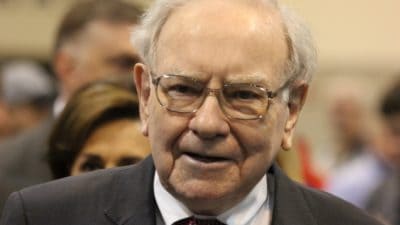Recent annual results from the banks are my cue to revisit the valuations of Lloyds (LSE: LLOY) (NYSE: LYG.US), Royal Bank of Scotland (LSE: RBS) and Barclays (LSE: BARC) (NYSE: BCS.US).
First off, how did the market react to the latest releases from these three banks? Well, Lloyds was the only one whose shares rose on the day of its results: up a modest 0.6% to 79p. Barclays’ shares fell 3.2% to 254p, while RBS suffered a 4.1% drop to 387p. (I’ll be using these share prices for the valuation measures in this article.)
The results showed all three banks continuing to post hefty exceptional costs for such things as past misconduct and business restructuring. On the positive side, all three also reported an improving picture on impairments, lower operating costs, and an increase in their capital buffer ratios.
Despite the exceptional costs, Lloyds was able to post a statutory bottom-line profit for the first time since the financial crisis — £1.5bn. Barclays posted a profit of £0.8bn, but RBS booked a £2.7bn loss.
The table below, based on underlying profits — rather than the statutory numbers — shows the banks’ trailing and forward price-to-earnings (P/E) ratios.
| P/E 2014 | Forecast P/E 2015 | |
| Lloyds | 9.8 | 9.8 |
| RBS | 483.8 | 13.0 |
| Barclays | 14.7 | 12.3 |
Lloyds appears significantly better value than its rivals on the P/E valuation. The Black Horse is also forecast to pay a higher income. Having just declared a — symbolic, rather than substantial — dividend for the first time since 2008, Lloyds is expected to yield 5.3% for 2015, compared with 3.7% for Barclays and 0.5% for RBS.
However, Lloyds’ valuation is less attractive on another important measure: price-to-tangible net asset value (P/TNAV).
The table below shows the banks’ TNAV per share over the last five quarters.
| 31 Dec 2013 | 31 Mar 2014 | 30 Jun 2014 | 30 Sep 2014 | 31 Dec 2014 | |
| Lloyds | 48.5p | 50.7p | 49.4p | 51.8p | 54.9p |
| RBS | 363p | 376p | 376p | 388p | 387p |
| Barclays | 283p | 284p | 279p | 287p | 285p |
All three companies have increased their TNAV per share from December 2013 to December 2014: Lloyds (+13%), RBS (+7%) and Barclays (+1%). The TNAV performances aren’t mirrored particularly well by the banks’ share price movements between last year’s annual results and this year’s: Lloyds (-3%), RBS (+18%) and Barclays (-4%).
At last year’s results date, Lloyds’ shares were on a P/TNAV of 1.67. Due to the decent rise in TNAV and modest decline in the share price, the P/TNAV has now come down to 1.44. So, Lloyds is cheaper now than it was a year ago.
The same goes for Barclays (to a less marked extent), with a P/TNAV of 0.89 compared with 0.94 a year ago. But, RBS, whose share price has risen well ahead of the increase in TNAV, is now more expensive — on a P/TNAV of 1.00 compared with 0.90 last year.
Despite Lloyds’ P/TNAV having come down from a year ago, though, the Black Horse remains distinctly more expensive than its rivals on this measure.
So, which bank is the best value now?
RBS’s valuation looks to be — on the face of it — up with events. The bank remains majority-owned by the government, and is behind Lloyds in the healing process. I think we need greater visibility on RBS’s future for the shares to re-rate higher.
For investors looking for a high income, Lloyds’ potential dividend yield catches the eye. The P/E is also low, but I think a re-rating of the shares is likely to be limited for the time being by the relatively high P/TNAV and the ongoing sale of the government’s remaining 24% stake in the bank.
For investors who like plays on undervalued assets, Barclays’ P/TNAV of 0.89 looks potentially attractive. For example, the company’s shares would be trading at 410p (about 60% upside) if they were rated on the same P/TNAV as Lloyds. However, Barclays’ P/E and yield suggest a more modest undervaluation, so, while there is scope for the shares to re-rate higher, I don’t think a 60% rise is on the cards in the short term.







